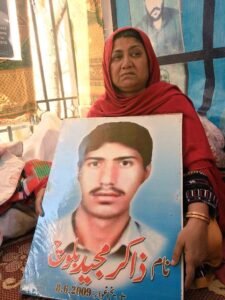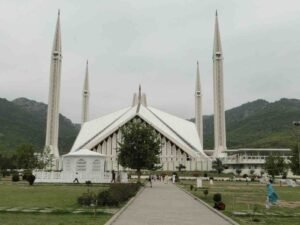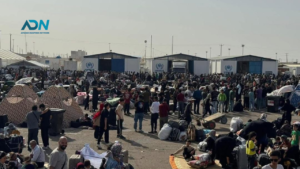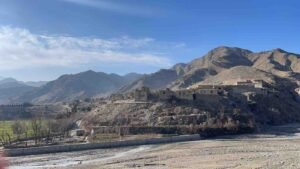Afghanistan and the Fallout of Regional Proxy Conflicts

Torkham crossing between Afghanistan and Pakistan. @private
By Nasir Khattak
For decades, Pakistan pursued a risky strategy—weaponizing extremist and terror groups as tools of foreign policy. From the rugged tribal belts along the Durand Line to the bloodied streets of Kashmir, Pakistan’s military-intelligence establishment cultivated, financed, and sheltered an ecosystem of non-state actors to achieve geopolitical leverage against regional adversaries, particularly India and Afghanistan. But today, the very forces once nurtured for strategic depth have evolved into a deadly internal threat, undermining national cohesion and eroding the writ of the state.
At the heart of this unfolding dilemma lies a paradox. Pakistan’s army and its intelligence wing, the Inter-Services Intelligence (ISI), once prided themselves on their ability to guide, control, and direct various armed outfits for tactical advantages. These included groups aligned with the so-called “Kashmir cause,” anti-Afghan Taliban factions, and sectarian militias. For decades, they operated as pawns in a regional chessboard, kept alive through covert funding, training, and political impunity. But with shifting ground realities and the rise of independent extremist agendas, the architects of this long game now find themselves trapped in their own machinery.
Pakistan Defence Minister’s recent televised confession that Pakistan had been doing the “dirty work” of Western powers for years was not just startling—it laid bare the deep-rooted duplicity of a State trying to balance external alliances and internal ambitions. The balance has since crumbled. A former senior official from Pakistan’s military once boasted about supporting “freedom fighters” in Kashmir. Today, those same narratives ring hollow amid an increasingly bloody domestic insurgency and rising civilian casualties.
The transformation of these strategic proxies into autonomous power centers has had catastrophic consequences. Many of the militant factions that once operated with state protection now view Islamabad as their primary adversary. Among the most dangerous is the Tehrik-e-Taliban Pakistan (TTP), a militant umbrella organization responsible for large-scale attacks including the devastating school massacre in Peshawar in 2014. Another is the Islamic State Khorasan Province (ISKP), whose bombings have targeted both civilians and security forces, including religious gatherings.
These aren’t isolated incidents. Rather, they signal a systemic failure: a misjudgment of the long-term costs of instrumentalizing militancy. According to recent security data, Pakistan recorded 490 terror attacks in 2023, the highest among all countries including compared to those in Africa and neighbouring Afghanistan. Pakistan continues to hold this record in 2024 as well, with hundreds of fatalities reported across the country. These statistics are grim markers of a strategy gone awry.
The ideological spectrum of the terror organisations in Pakistan adds another layer of complexity. While groups like Lashkar-e-Taiba (LeT) and Jaish-e-Mohammed (JeM) have remained largely aligned with Pakistan’s strategic interests in Kashmir, others such as the TTP and Baloch separatist movements have taken up arms against the Pakistani state itself. Sectarian outfits like Sipah-e-Sahaba and Lashkar-e-Jhangvi have further destabilized the country by fomenting anti-Shia violence.
The Pakistani state’s continued inability—or unwillingness—to decisively dismantle this entrenched militant infrastructure reflects both institutional complicity and political paralysis. Many of these groups are believed to maintain operational ties with segments of the security establishment, while also enjoying ideological support within sections of society. Financial networks tied to religious schools, charities, and even legitimate businesses continue to feed this vast militant network.
Pressure from global powers has, at times, forced Pakistan into temporary crackdowns. Military operations such as Zarb-e-Azb and Radd-ul-Fasaad were launched to flush out militants from tribal regions, and some successes were claimed. But these offensives often resulted in collateral damage, mass displacement, and renewed cycles of radicalization. The siege of Lal Masjid in 2007 stands as a particularly potent example of blowback—an operation meant to root out fundamentalism instead served as a rallying cry for jihadist recruitment across the country.
Pakistan’s hopes of leveraging its strategic geography and role in Afghanistan to evade international scrutiny have also begun to falter. Despite multiple attempts by India to have Pakistan designated as a state sponsor of terrorism, support from global allies—particularly China—has shielded it from formal censure. Nevertheless, economic isolation, grey listings by financial watchdogs, and diminishing diplomatic credibility have collectively pushed Pakistan to a crossroads.
One of the starkest consequences of Pakistan’s policy has been the fragmentation of the terror landscape in Pakistan. What was once a relatively centralized control over proxy groups has splintered into loosely affiliated, ideologically divergent, and often mutually antagonistic factions. These entities not only challenge state authority but also compete for resources, recruits, and territory, often resorting to extreme violence.
Recent attacks on infrastructure projects tied to Chinese investment—especially in Balochistan—underscore this volatility. Armed Baloch groups have increasingly targeted Chinese nationals and strategic assets, adding another layer of diplomatic friction. Similarly, Pakistan’s Shia communities remain under constant threat from sectarian extremists emboldened by years of permissive governance.
Efforts to counter this spiraling threat now appear reactive and short-term. While officials speak of cracking down on terror financing and dismantling extremist networks, the underlying structures—be they ideological, economic, or institutional—remain largely untouched.
Ultimately, the state’s reliance on terror groups for strategic advantage has mutated into an existential crisis. What began as a calculated use of proxy warfare has become a Frankenstein’s monster—fierce, unpredictable, and immune to old chains of command. The danger now is not merely external; it is rooted in Pakistan’s own soil, feeding off the contradictions of a policy that failed to recognize its own expiry date.
If Pakistan is to avert further descent into chaos, it must make an unambiguous break from its past strategy. This includes dismantling all militant infrastructure, severing ties between religious extremism and politics, and rebuilding public institutions on principles of rule of law and accountability. Otherwise, the bloody blowback will not just continue—it will define Pakistan’s future.
Nasir Khattak specializes in the China-Pakistan region, with a particular focus on the economic relations between the two countries.
Note: The contents of the article are of sole responsibility of the author. Afghan Diaspora Network will not be responsible for any inaccurate or incorrect statement in the articles.










